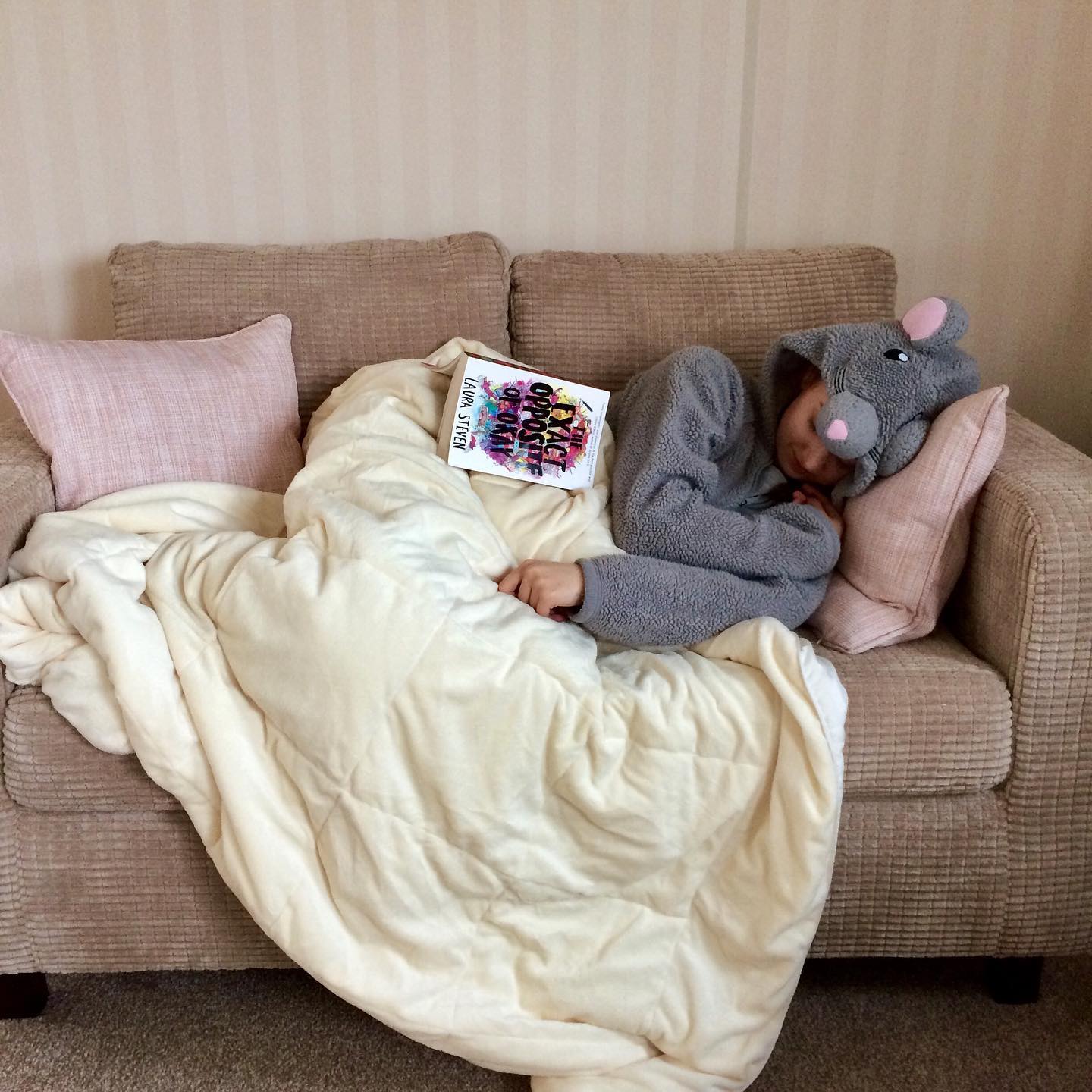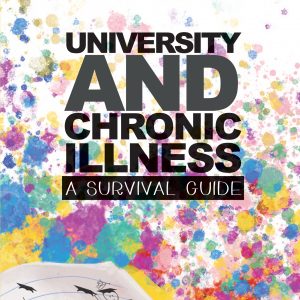
[#AD] Many thanks to Safe And Sound for sponsoring this post; you can find out more about them and download the free Pill Reminder App here. As always, all opinions are my own!
When it comes to chronic illness, there’s one piece of advice it seems healthcare professionals just cannot resist sharing: it’s all about having a routine. Time and time again, we’re led to believe that scheduling each and every one of our waking moments and following the exact same pattern for the foreseeable future is the key to unlocking wellbeing and becoming the best version of ourselves.
And whilst I’m certainly not going to argue that striving for a routine isn’t beneficial, it’s the practicalities of having such a process to life that act as a barrier. Not only does an approach like this pretty much erase the possibility of having (God-forbid) any spontaneity in life, the reality of living with a fluctuating illness can mean that having a concrete day-to-day routine just isn’t feasible.
To me, then, it seems it’s all about finding a balance: the middle ground between having go-to rituals that help to structure my day, but also maintaining the flexibility to shuffle things around depending on how I’m feeling and what’s happening in my life. Contrary to popular opinion, I’ve found that relaxing my own expectations around planning my day and (please excuse the phrase) going with the flow is actually what works best for my symptoms. That said, however, there are still a handful of practices that I prioritise and attempt to implement into my life more rigidly, and it’s these that I’d like to share with you today.
Adhering To Medication Schedules
Let’s start with the most obvious one, because naturally, taking your medication as prescribed should be the absolute baseline of positive health behaviour. If you’re taking one tablet a day, the chances are that’s not going to cause much hassle for you. If, however, you’re taking multiple prescription drugs at various points in the day, that each have to be taken an equal measure of time away from each other, and food and drink, the process can become a little more complicated.
Take me, for example. There are four different points in the day where I’m required to take various medications. When it comes to the first dose in the morning, I’m a gold-star student. I know that this dosage comes straight after my morning cereal and cuppa, and it’s become a natural habit. When it comes to the rest, however, the results can leave a lot to be desired.
 In an attempt to combat this issue, I’ve been trialling Safe and Sound’s Pill Reminder App. Available for iPhone and Android devices, the app allows you to input your medication and schedule when it should be taken, sending you periodic reminders to do what you need to do when the time comes around.
In an attempt to combat this issue, I’ve been trialling Safe and Sound’s Pill Reminder App. Available for iPhone and Android devices, the app allows you to input your medication and schedule when it should be taken, sending you periodic reminders to do what you need to do when the time comes around.
Users are able to add multiple medications, along with dosage sizes, ideal time to be taken (both during the day and throughout the week), and any additional requirements. Then, when the time comes around, the app sends a stylised but discrete reminder to the user, prompting them to seek their medication and mark the notification as ‘taken’. I found this feature to be particularly handy for the times I’ve absently gone to take my tablet and then promptly forgotten all about it. Up until now, there’ve been many occasions where I’ve had to retrospectively perform an investigation involving counting backwards on blister packets and requesting eyewitness accounts from the people around me.
Ah, brain fog. The gift that keeps on giving.
I was also pleasantly surprised at the flexibility the app allows: not only encouraging you to set multiple notifications for individual medications at various points in the day, but also allowing dosages to be customised and spread out throughout the week; perfect for reminding you of those vitamins and supplements that don’t necessarily have to be taken on a daily basis.
One final big thumbs-up from me for Safe and Sound is also that the app takes into account that certain medications vary in whether they’re to be taken before, during and after food. As somebody who has two dosages that cannot be taken within an hour of food either side, I can tell you that this process frequently catches me out. Reminder services like these, structuring your pill taking routine, remove the horrifying moment of realisation that comes when you take your tablet, then realise that because of doing so you have to commit to not eating for the next hour. THE HORROR.
With genuinely helpful medication overviews and reports, comprehensive in-app help and support, and easily customisable notifications, overall I’ve been very impressed with the usability of the Safe and Sound app… so much so that I’m wondering whether there’s potential to take it one step further in the future and provide reminders for other positive health behaviours, which we’ll now move on to touch upon in this post. In the meantime, you can find out more about Safe And Sound’s Pill Reminder App and download it yourself on this page, and shop their existing products here. I recently acquired a Multicoloured 7 Day Pillbox of my own and it’s truly one of the most beautiful pillboxes I’ve ever seen!
Pacing And Mindfulness
 Whilst this post is about letting go of the concept of rigorous routines, it’s important to make clear that this doesn’t inherently mean that pacing and activity management goes out of the window too. Even when your day hasn’t been meticulously planned out to the exact minute (something I discuss in this recent Instagram post), avoiding the ‘boom and bust’ mentality that comes with over-exerting yourself is still incredibly important.
Whilst this post is about letting go of the concept of rigorous routines, it’s important to make clear that this doesn’t inherently mean that pacing and activity management goes out of the window too. Even when your day hasn’t been meticulously planned out to the exact minute (something I discuss in this recent Instagram post), avoiding the ‘boom and bust’ mentality that comes with over-exerting yourself is still incredibly important.
If you’re new to or struggling with pacing, I highly recommend heading over to Natasha Lipman’s blog and reading her series on the very subject.
Of course, pacing is so much easier said than done, and years later I’m still learning through trial and error. However, this is where mindfulness comes into the equation for me. Relaxing and restorative rest can be hard to come by when you’re dealing with an influx of not-very-nice symptoms, and although I was initially resistant to it, I’ve found that regularly practicing mindfulness can actually be genuinely helpful in this area.
Apps such as Calm and Headspace offer guided meditation programmes for people of all levels of experience, and even just the process of making yourself comfortable and indulging in some peace and quiet can feel as though it offers some respite. I don’t mind telling you that I’m rather appalling at turning off the chatter in my head and actually engaging with the breathing techniques, but I try my best every day, and I do feel slightly better for it.
Bedtime Routines
 The final staple practice I’ve personally found helpful relates to sleep, or in my case, a lack of it. It seems almost counter-intuitive that a condition that causes chronic fatigue can also cause an inability to fall asleep, and yet here we are.
The final staple practice I’ve personally found helpful relates to sleep, or in my case, a lack of it. It seems almost counter-intuitive that a condition that causes chronic fatigue can also cause an inability to fall asleep, and yet here we are.
Insomnia can be a beast, and it’s been one of my most frustrating symptoms over the last five years; you can read more about my own experiences in this past post. Whilst there’s unfortunately no quick fix in my case, I’ve learned over time that developing and maintaining particular habits before bed can marginally help.
In addition to my evening medication (which the Safe And Sound App now handily reminds me to take when I should, instead of leaving it too late!), I do my best to adhere to good sleep hygiene practice. Such behaviours include no caffeine or cheeky cups of tea in the evening, no heavy or complex foods in the hours before I’d like to fall asleep, and here’s the key one… switching off my phone in the evening.
It can be so, so difficult to get into the practice of doing this, but it really is a gamechanger. Official guidance recommends shutting down your electricals one hour before bed, but these days, I always try to one-up this by switching off my phone two hours before. By giving yourself some space away from 1) the artificial screen lighting, and 2) the endless bombardment of notifications and lure of new social media content we’re all so transfixed on these days, your brain and body can properly begin to wind-down and prepare to sleep. To be honest, even if you don’t experience sleep difficulties, I’d recommend try to switch off your electronics and wind down; it feels healthier in so many ways.
And there we have it: three elements of my life and self-care that I try to keep as stable as possible, even in the midst of unpredictable, fluctuating illness. Can you relate? Are there any habits that you personally try to maintain alongside your condition? I’d love to hear about them in the comments below!
[#AD] Many thanks to Safe And Sound for sponsoring this post; you can find out more about them and download the free Pill Reminder App here. As always, all opinions are my own!





